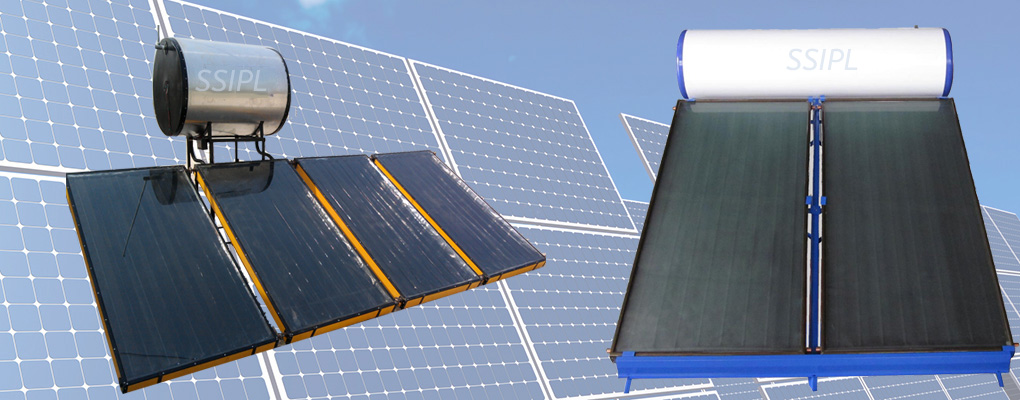Solar Water Heater
FPC
Flat Plate Collectors (FPC) based Solar Water Heaters
The solar radiation is absorbed by Flat Plate Collectors which consist of an insulated outer metallic box covered on the top with glass sheet. Inside there are blackened metallic absorber (selectively coated) sheets with built in channels or riser tubes to carry water. The absorber absorbs the solar radiation and transfers the heat to the flowing water.

Salient Features of Solar Water Heating System
⇨ Solar Hot Water System turns cold water into hot water with the help of sun's rays.
⇨ Around 60 deg. – 80 deg. C temperatures can be attained depending on solar radiation, weather conditions and solar collector system efficiency.
⇨ Hot water for homes, hostels, hotels, hospitals, restaurants, dairies, industries etc. Can be installed on roof-tops, building terrace and open ground where there is no shading, south orientation of collectors and over-head tank above SWH system.
⇨ SWH system generates hot water on clear sunny days (maximum), partially clouded (moderate) but not in rainy or heavy overcast day.
⇨ Only soft and potable water can be used Stainless Steel is used for small tanks whereas Mild Steel tanks with anti-corrosion coating inside are used for large tanks.
⇨ Solar water heaters (SWHs) of 100-300 liters capacity are suited for domestic application.
⇨ Larger systems can be used in restaurants, guest houses, hotels, hospitals, industries etc.
Fuel Savings:
A 100 liters capacity SWH can replace an electric geyser for residential use and saves 1500 units of electricity annually.
Avoided utility cost on generation
The use of 1000 SWHs of 100 liters capacity each can contribute to a peak load saving of 1 MW.
Environmental benefits
A SWH of 100 liters capacity can prevent emission of 1.5 tons of carbon-dioxide per year.
Life: 15-20 years
Payback period:
3-4 years when electricity is replaced
4-5 years when furnace oil is replaced
5-6 years when coal is replaced
Though the initial investment for a solar water heater is high compared to available conventional alternatives, the return on investment has become increasingly attractive with the increase in prices of conventional energy. The payback period depends on the site of installation, utilization pattern and fuel replaced.